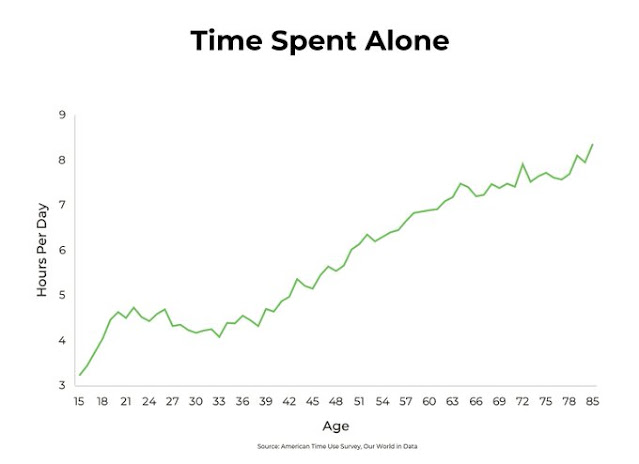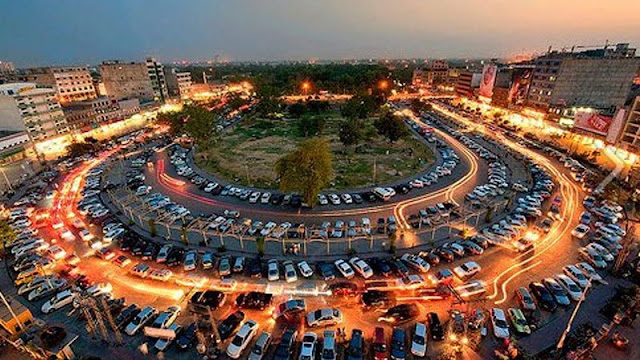In a world of abundance, where technological advancements and scientific breakthroughs have revolutionized the way we live, it’s disheartening to realize that millions of people across the globe are still grappling with a fundamental challenge: hunger. The issue of food crisis, compounded by factors such as conflict, climate change, and inequality, persists as a critical concern that demands urgent attention. In this article, we’ll delve into the intricacies of the food crisis, its measurements, root causes, and potential solutions. Let’s explore how we can collectively strive towards a future where no one has to bear the burden of an empty stomach.
The Global Hunger Index: Measuring Food Crisis
The Global Hunger Index (GHI) serves as a compass that guides us through the complex landscape of hunger. Collaboratively published by Welthungerhilfe and Concern Worldwide since 2006, this index meticulously measures and tracks the hunger situation on a global, regional, and national scale. With a shared mission of achieving “Zero Hunger by 2030,” these organizations have taken on the responsibility of shedding light on one of humanity’s most pressing challenges.
Measuring Hunger: How Does GHI Work?
The GHI doesn’t just present a harsh picture; it employs a comprehensive methodology to assess the gravity of the problem. The index takes into account various factors, including undernourishment, child wasting, child stunting, and child mortality. By analyzing data from different periods, GHI offers a multi-dimensional view of hunger that goes beyond mere numbers.

Global Hunger Index Report 2022
This report highlights the complex interplay of factors contributing to hunger and food insecurity around the world. Here’s a summary of the key points of the report:
- Rising Hunger and Conflict: The report emphasizes that hunger is not just a result of food scarcity but is also driven by various factors including violent conflicts. The 2022 Global Report on Food Crises points out that conflict and insecurity were the main drivers of acute food insecurity in 2021, affecting millions of people. Conflict is also a significant contributor to chronic hunger and malnutrition. The recent conflict in Ukraine has further escalated concerns about the relationship between conflict and hunger.
- Impact of COVID-19: The COVID-19 pandemic has worsened economic conditions in low- and middle-income countries, leading to slower growth, rising prices, and increased poverty rates. The pandemic’s effects are projected to last longer in poorer countries, worsening food insecurity and poverty. The disruptions caused by the pandemic have led to significant increases in global food prices.
- Regional Trends: The report examines hunger levels across different regions. South Asia and Africa South of the Sahara have the highest hunger levels, with progress in reducing hunger stagnating. Child stunting and wasting rates in these regions are of particular concern.
- Vulnerable Regions: East Africa, particularly Ethiopia, Kenya, and Somalia, is facing severe droughts, compounded by the COVID-19 pandemic, conflict, and rising food prices. West Asia and North Africa, Latin America and the Caribbean, East and Southeast Asia, and Europe and Central Asia also face their unique challenges and trends in hunger.
- Countries with Alarming Levels of Hunger: The report identifies countries with alarming levels of hunger, including Yemen, the Central African Republic, Madagascar, and others. The situation is dire in these countries due to a combination of conflict, economic instability, and other factors.
- Inequality within Countries: Even in countries with overall favourable hunger scores, there are disparities within regions or districts. This disparity highlights the need for targeted interventions and better data at the subnational level.
- Progress and Challenges: Despite progress made in reducing hunger in some countries, there are concerns about the worsening situation in others. The report emphasizes that action is needed to reverse the forces driving hunger and undernutrition and to build a more resilient and sustainable world.
Overall, the report emphasises the complexity of the global food crisis and the urgent need for comprehensive and coordinated efforts to address the multiple drivers of hunger and food insecurity around the world.
Global Report on Food Crises 2023
The 2023 Global Report on Food Crise2023s (GRFC) shows that more people are facing urgent food and livelihood needs. The report says that over 250 million people are dealing with severe hunger, partly due to economic challenges and the war in Ukraine. In 2022, about 258 million people in 58 countries and areas experienced serious food insecurity, which is worse than in 2021 when 193 million people in 53 countries and areas faced similar challenges.
The Food Security Information Network (FSIN), along with the Global Network against Food Crises (GNAFC), published the GRFC 2023. It provides information about acute food insecurity around the world in 2022, focusing on countries identified by the GRFC. The report involves 16 partners working together to assess food insecurity situations and guide both humanitarian and development actions through well-researched evidence and analysis.
Hunger and Food System in Conflict: A Vicious Cycle
One of the most heart-wrenching aspects of the food crisis is its entanglement with conflicts. In regions plagued by violence and instability, hunger becomes an inescapable reality. The two-way relationship between hunger and conflict is a vicious cycle that entraps communities, making it imperative to address both issues simultaneously.
Climate Change and Food Crisis: A Looming Catastrophe
Climate change poses a significant threat to food security. Extreme weather events, rising temperatures, and shifting precipitation patterns disrupt agricultural systems and diminish harvests. As we grapple with these challenges, the urgency to take climate action becomes even more apparent, for the sake of both current and future generations.
Ukraine War and Rising Food Crisis
In recent years, the conflict in Ukraine has escalated, leaving a trail of devastation that extends beyond its borders. The reverberations of the Ukraine war have contributed to the exacerbation of the food crisis. Disrupted supply chains, displacement of communities, and economic instability have added fuel to an already burning issue.
Inequality, Hunger, and Malnutrition: Breaking the Chain
Inequality is the root cause of hunger and malnutrition. As resources remain concentrated in the hands of a few, marginalized communities are left struggling for sustenance. Bridging the gap between the haves and the have-nots isn’t just an ethical imperative; it’s a crucial step towards achieving a world without hunger.
Hunger and Conflict: A Direct Link
The intricate web of conflict and hunger cannot be ignored. Across various countries, conflicts have a direct and often devastating impact on food security. Families caught in the crossfire are forced to grapple with not only the horrors of war but also the gnawing pain of hunger.
Pakistan’s Plight: A Struggle for Food Security
The Global Report on Food Crises (GRFC) for 2023 paints a grim picture of the state of food security. The number of people facing acute food insecurity has surged, with over 250 million individuals requiring urgent assistance. The report highlights how economic shocks and the Ukraine war have contributed to this distressing reality.
Pakistan’s Rank: A Disturbing Revelation
Pakistan’s rank in the Global Hunger Index is a sobering reminder of the challenges that lie ahead. With a score of 26.1, Pakistan is classified as having a serious level of hunger. Despite efforts to address the issue, the struggle for food security persists, highlighting the need for comprehensive interventions.
In the 2021 Global Hunger Index, Pakistan holds the 92nd position among 116 countries, indicating a serious level of hunger with a score of 24.7. Moving to the 2022 Global Hunger Index, Pakistan now ranks 99th among 121 countries with available data. Its score of 26.1 continues to signify a serious level of hunger.
The Role of the Global Hunger Index
Beyond just statistics, the GHI catalyzes change. By spotlighting areas of concern and emphasizing the need for action, it compels governments, organizations, and individuals to come together and address the root causes of hunger. It’s a call to arms, reminding us that no one should have to go to bed hungry.
A Call to Action: Navigating the Path Forward
In conclusion, the global food crisis is a multifaceted challenge that demands our immediate attention. The amalgamation of conflict, climate change, inequality, and economic downturns has given rise to a perfect storm that threatens food security for millions. However, in the face of adversity, there is hope. By embracing sustainable practices, fostering international cooperation, and prioritizing the well-being of all, we can pave the way towards a world free from hunger.
1. Food System Transformation
The heart of the matter lies in the way our food system operates. Food system transformation is a pivotal concept that advocates for sustainable, equitable, and resilient ways of producing, distributing, and consuming food. It’s not just about filling plates; it’s about nourishing communities and safeguarding the planet for generations to come.
2. One Health, Zero Hunger
The concept of One Health highlights the interconnectedness of human, animal, and environmental health. By embracing this approach, we can create synergies that not only alleviate hunger but also promote overall well-being. The health of ecosystems, livestock, and communities are intertwined, and understanding this web can lead us closer to achieving zero hunger.
3. SDGs: Our Roadmap to Zero Hunger
The United Nations Sustainable Development Goals (SDGs) offer a roadmap that guides us towards a brighter future. SDG 2 specifically focuses on eliminating hunger, ensuring food security, and promoting sustainable agriculture. By aligning our efforts with the SDGs, we can work collectively to create a world where everyone has access to nutritious and sufficient food.
Concluding Solutions
Welthungerhilfe is a big nonprofit organization in Germany. They work on helping countries grow and also provide help during emergencies. Their big goal is to stop hunger completely by the year 2030. Concern Worldwide is a global nonprofit group that helps people in need around the world. They focus on places where people are very poor. They want to get rid of extreme poverty everywhere.
The situation with hunger around the world is worrying, as shown in the 2022 GHI report. Many problems happening at the same time are showing weaknesses in how food is provided, from higher to lower levels. This is making people in different parts of the world vulnerable to hunger. Even though the Sustainable Development Goals set a big goal of getting rid of hunger completely, the progress made is slipping away, and things are getting worse in many places.
There’s a big risk of a severe lack of food happening again in Africa. The help that’s available right now might not be enough for everyone who needs it. If this crisis isn’t dealt with on a large scale, it would be a really sad sign that the global food system isn’t working and that people’s basic right to food is being ignored.
We need to take quick action to stop the things that are causing hunger and poor nutrition. It’s very important to do things that make the world stronger, fairer, and able to last a long time so that hunger can be gotten rid of for good.
*Read further details Why Does Global Hunger Persist? – Republic Policy
**Read More about Corporate Agriculture Farming which would worsen the food crisis in Pakistan if not tackled holistically.
FAQs
- What is the Global Hunger Index (GHI)? The GHI is a tool that comprehensively measures and tracks hunger globally, regionally, and nationally. It offers insights into the complex issue of the food crisis and guides efforts towards eradicating hunger.
- How does conflict contribute to food insecurity? Conflict disrupts supply chains, displaces communities, and leads to economic instability, all of which contribute to exaggerated levels of food insecurity.
- What role does climate change play in the food crisis? Climate change disrupts agricultural systems, leading to reduced harvests and compromised food security. Extreme weather events and shifting patterns pose significant challenges.
- How can inequality be addressed to combat hunger? Addressing inequality requires policies that promote equitable distribution of resources, access to education, and opportunities for marginalized communities.
- What can individuals do to contribute to ending the food crisis? Individuals can support organizations working towards food security, reduce food waste, and advocate for policies that prioritize sustainable agriculture and equitable distribution of resources.










